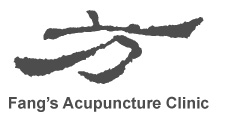
Conditions We Treat
- Allergies
- Anxiety
- Arthritis
- Asthma
- Back Pain
- Chronic Pain
- Colds and Flus
- Cough (Acute & Chronic)
- Depression
- Dermatological Disorders
- Dizziness
- Fibromyalgia
- Headaches & Migraines
- Digestion disorders
- Insomnia
- Irritable Bowel Syndrome
- Neck and Shoulder tension
- Cardiovascular disease
- Post-stroke conditions
- Sciatica
- Sinusitis
- Stress
- Tendonitis
- Women’s Health
- Work Injuries
What is acupuncture?
Acupuncture is one of the oldest, most commonly used medical procedures in the world. Originating in China more than 3,000 years ago, acupuncture began to become better known in the United States in 1971, when New York Times reporter James Reston wrote about how doctors in China used needles to ease his pain after surgery.
The term acupuncture describes a family of procedures involving stimulation of anatomical points on the body by a variety of techniques. American practices of acupuncture incorporate medical traditions from China, Japan, Korea, and other countries. The acupuncture technique that has been most studied scientifically involves penetrating the skin with thin, solid, metallic needles that are manipulated by the hands or by electrical stimulation.
How widely is acupuncture used in the United States
In the past two decades, acupuncture has grown in popularity in the United States. The report from a Consensus Development Conference on Acupuncture held at the National Institutes of Health (NIH) in 1997 stated that acupuncture is being "widely" practiced for relief or prevention of pain and for various other health conditions. According to the 2002 National Health Interview Survey--the largest and most comprehensive survey of complementary and alternative medicine (CAM) use by American adults to date--an estimated 8.2 million U.S. adults had ever used acupuncture, and an estimated 2.1 million U.S. adults had used acupuncture in the previous year.
What does acupuncture feel like?
Acupuncture needles are metallic, solid, and hair-thin. People experience acupuncture differently, but most feel no or minimal pain as the needles are inserted. Some people are energized by treatment, while others feel relaxed. It is also important to seek treatment from a qualified and experienced acupuncture practitioner to avoid any risk of improper needle placement which may cause unnecessary pain during the treatment.
Is acupuncture safe?
The U.S. Food and Drug Administration (FDA) approved acupuncture needles for use by licensed practitioners in 1996. The FDA requires that sterile, nontoxic needles be used and that they be labeled for single use by qualified practitioners only.
Relatively few complications from the use of acupuncture have been reported to the FDA in light of the millions of people treated each year and the number of acupuncture needles used. Still, complications have resulted from inadequate sterilization of needles and from improper delivery of treatments. Practitioners should use a new set of disposable needles taken from a sealed package for each patient and should swab treatment sites with alcohol or another disinfectant before inserting needles. When not delivered properly, acupuncture can cause serious adverse effects, including infections and punctured organs.
How might acupuncture work?
Acupuncture is one of the key components of the system of traditional Chinese medicine (TCM). In the TCM system of medicine, the body is seen as a delicate balance of two opposing and inseparable forces: yin and yang. Yin represents the cold, slow, or passive principle, while yang represents the hot, excited, or active principle. Among the major assumptions in TCM are that health is achieved by maintaining the body in a "balanced state" and that disease is due to an internal imbalance of yin and yang. This imbalance leads to blockage in the flow of qi (vital energy) along pathways known as meridians. It is believed that there are 12 main meridians and 8 secondary meridians and that there are more than 2,000 acupuncture points on the human body that connect with them.
Preclinical studies have documented acupuncture's effects, but they have not been able to fully explain how acupuncture works within the framework of the Western system of medicine that is commonly practiced in the United States. It is proposed that acupuncture produces its effects through regulating the nervous system, thus aiding the activity of pain-killing biochemicals such as endorphins and immune system cells at specific sites in the body. In addition, studies have shown that acupuncture may alter brain chemistry by changing the release of neurotransmitters and neurohormones and, thus, affecting the parts of the central nervous system related to sensation and involuntary body functions, such as immune reactions and processes that regulate a person's blood pressure, blood flow, and body temperature.
